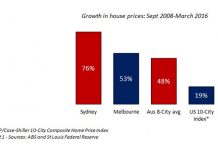People may have seen a recent article in the UK Financial Times which pointed out that, for the first time in half a century, British pension funds now hold more bonds than equities.
The investment industry has long become conditioned to the view that the “risk” of a multi-asset portfolio can be readily defined by its broad asset allocation across the major five or six asset classes. It is a generally accepted rule of thumb that bonds are less “risky” than growth assets, so are UK pension funds less risky today than at any time in the past fifty years?
In reality, the process is even more simplistic than this, according to Dominic McCormick of Select Asset Management in Sydney. Each of these major asset classes can be grouped into growth or income (non-growth) buckets, and depending on the growth / income split of the investor or portfolio mandate, the assets can be allocated according to a generally accepted mix for cautious / conservative up to high growth / aggressive. Notwithstanding that, our experience of aggressive investors is that they are generally ones that shout a lot! This has generally given investors and financial advisers a good guide to riskiness of portfolios.
However, as McCormick points out, a couple of decades ago this sort of simplistic approach worked and made sense because interest rates were normal. Also, investment options available both across and within each asset class were quite simplistic, long only, benchmark relative. Furthermore, strategic asset allocation works when the next ten years is followed by bond and/or equity bull markets. Today though, this approach to defining the broad risk of a diversified portfolio is becoming increasing flawed in a much more complex environment. It has failed to keep up with the expanding universe of strategies and styles within asset classes, new asset classes / strategies and the more dynamic way asset and strategy allocation is being managed at the portfolio level.
As an example, the “equities” growth asset class must not only take into account long only, index-relative exposure or a mix of value and growth alpha managers, but could also contain long / short, market neutral, options strategies, absolute return, low beta / low volatility, income focused and quality. These styles and strategies all have very different risk characteristics way before one even gets to the big elephant in the room, valuation or price of the asset class as a whole.
At the supposed “income” or cautious end of the spectrum, fixed interest used to consist of mainly government and semi-government bonds paying attractive income in nominal and real terms. Today we have a world where traditional sovereign bonds are paying very low yields and are almost sure to guarantee a negative real return and capital losses over the next decade or so. They are, therefore, arguably more risky in that potential losses and the chance of not meeting certain objectives have increased dramatically.
The ‘juicing up’ of bond portfolios with high yield, hybrids and EM debt (many of which that have higher risk or volatility than some equity styles mentioned above) certainly does not help much! We all know returns are not the same in different big picture cycles BUT perhaps more importantly, risk is also not constant through time, and the perception of risk by investors and financial advisers is often the exact opposite of the real risk at a point in time.
Dynamic asset allocation is driven more by pragmatism / contrarianism and testing so-called conventional wisdom. “Greed” and “fear” can distort asset class price / valuation so much that the accepted normal is no longer just that, normal! If practiced appropriately, dynamic asset allocation is largely about reducing risk and correlation.
However, getting back to the UK pension fund story – the ten year forward return expectations for UK gilts and other juiced up fixed income investments are negative so these pension fund portfolios are becoming more risky, not less. We are thus nearly back to the conditions that prevailed post WWII (6 o’clock on the Kondratieff cycle) when George Ross Goobey, manager of the Imperial Tobacco pension fund persuaded the board to not just stop buying gilts, but to sell the fund’s entire fixed income portfolio for growth assets.
Without getting into the detail of the long inflation cycle that followed the 1948 bond market peak of bubble, it was conventional wisdom at the time to buy war bonds and government guaranteed bonds by the bucket load to avoid risk.
Recommended by all experts these investments lost a fortune and notwithstanding the arrival of the inflation linked bond in the pension fund’s portfolio which will dampen losses, the same is going to happen again this time.
The dynamic asset allocation call for a sensible UK pension fund is to short G7 government bonds and overweight more growth assets in a pragmatic way, not unlike Goobey, who incidentally started buying UK gilts again in the mid 1970s at 17% yield. Not a cult of equity, a cult of sensibility.
| The above data and research was compiled from sources believed to be reliable. However, neither MBMG International Ltd nor its officers can accept any liability for any errors or omissions in the above article nor bear any responsibility for any losses achieved as a result of any actions taken or not taken as a consequence of reading the above article. For more information please contact Graham Macdonald on [email protected] |




